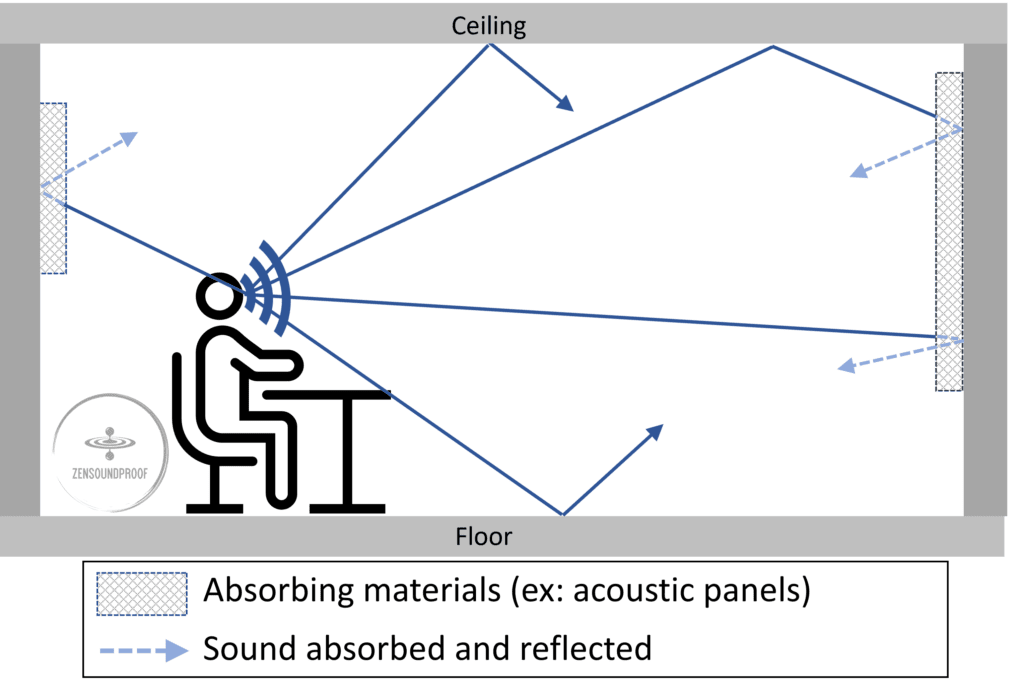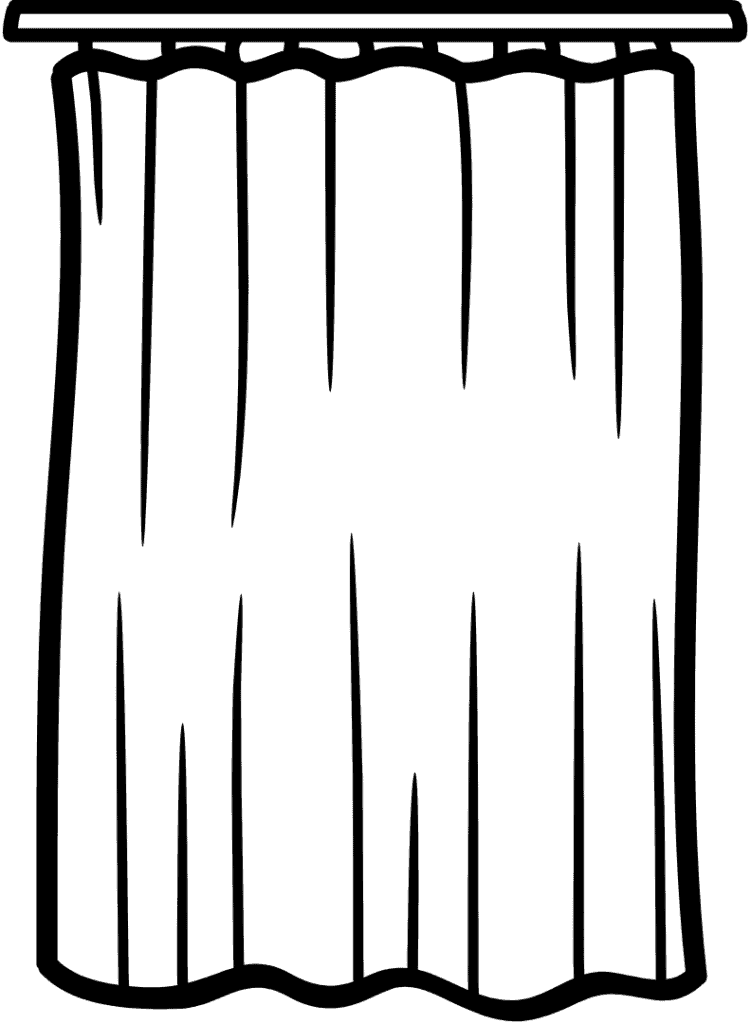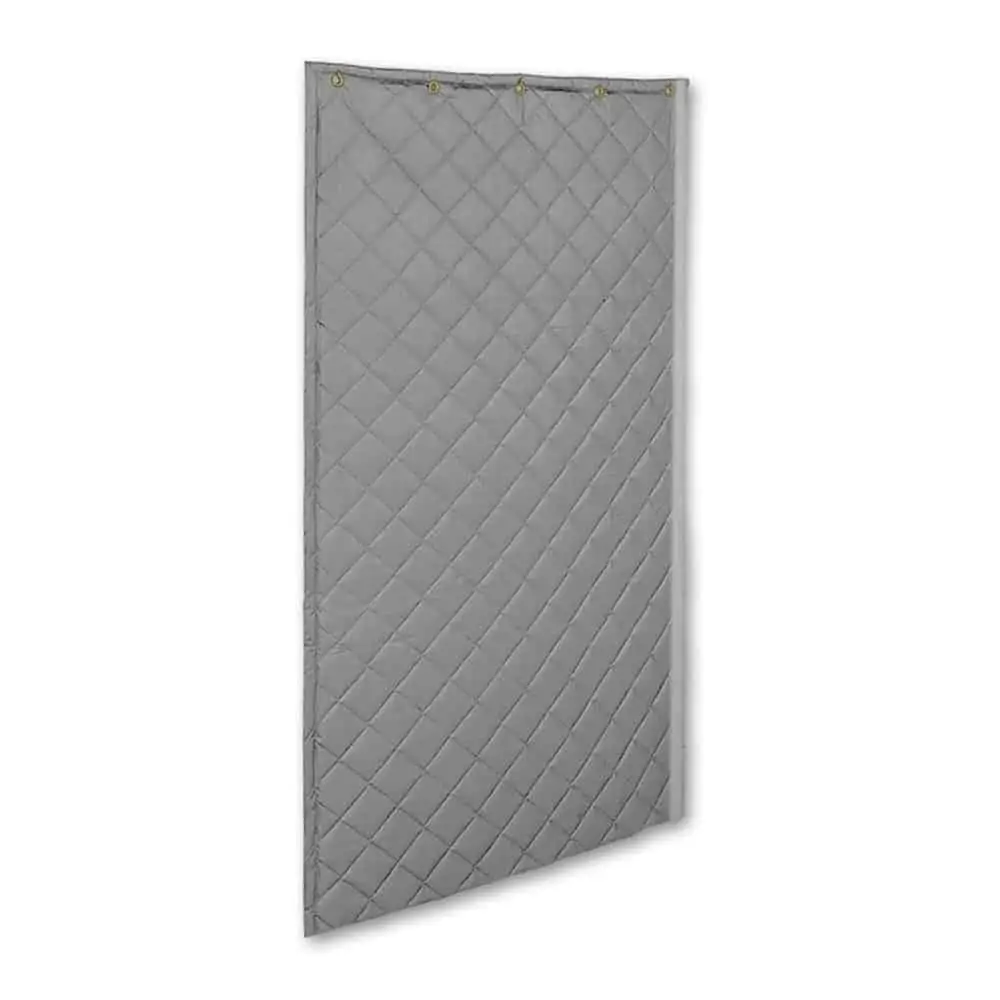Egg crate foam is perhaps one of the most recognizable soundproofing products. You’ll see it on the walls of recording studios or other rooms dealing with acoustics. But is egg crate foam soundproof?
That’s the question I’ll answer in this article. Below, I’ll look at whether eggcrate foam works and what jobs you should use it for in your soundproofing projects.
How Does Egg Crate Foam Work?
The most obvious place to start is by defining what we mean by egg crate foam. Simply put, egg crate foam is a sheet of acoustical, open-celled foam that resembles an egg crate or carton. It’s worth noting that it’s not actually an egg crate, as a cardboard box will do basically nothing for soundproofing.
The purpose of egg crate foam is to absorb sound waves bouncing around a room. The peaks and valleys created by the egg crate shape are ideal for this, as is the material used to make the product. To understand why, let’s talk a bit about echo and absorption.
Echo and Reverb
I won’t go into too much detail here about echo and reverb because I have a full article on it. If you want more of the science behind it, I suggest checking that out.
In short, sound waves leave their source and travel in a straight line. Once they reach a hard surface, they reflect off it, creating an echo. Think of it as throwing a ball at a wall. The ball’s energy causes it to bounce off, sometimes straight back at you, but other times in different directions. This is essentially an echo.
Reverberation is similar but slightly different. An echo is when you hear reflections of the original sound as separate sounds. Reverb, however, is when the sound continues after the original sound has stopped. Due to the high number of reflected waves, your brain perceives it as a single continuous sound.
Absorption
Absorption is the soundproofing principle of reducing echo and reverberation. Importantly, this involves treating sound waves within a space rather than preventing them from escaping. As such, we don’t typically refer to absorption as soundproofing, but rather as acoustic management.

To a certain extent, we could argue that absorption does reduce sound transmission out of a room, but that’s not its primary goal. Instead, its purpose is to improve the sound quality inside a room by making it sound better (clearer).
Absorption relies on light and foamy materials that typically have a more open structure. If you’ve ever moved house, think about the difference it makes having an empty room compared to one filled with furniture. This is a good example of the power of soft and light materials to absorb sound.
In short, the sound wave hits the foamy material and tries to make its fibers vibrate. Because the material is soft, this doesn’t work, meaning the sound waves expend their energy. As a result, this energy is converted into heat.
Along with using foamy materials, we can also use products that don’t have a flat surface. This is where egg crate foam comes in. The peaks and valleys increase the tile’s surface area and, by extension, its absorption surface. However, you do also lose some of the foam tile’s thickness by cutting parts out, so it’s a balancing act to achieve the best results for your needs.
Absorption is effectively the opposite of the soundproofing principle of mass. The latter relies on hard, dense materials to block unwanted noise from leaving a room rather than preventing waves from reflecting around the space. For most soundproofing projects, you’ll want a mix of both.
Of course, to make a room completely soundproof, you’ll also want to use some damping and decoupling, too, but they’re not relevant for this article.
Why Choose Egg Crate Foam Over Acoustic Panels?
If you’ve looked into soundproofing materials before, you can probably tell that egg crate foam is pretty similar to acoustic foam. There are clear differences between the two, however, and these might sway you one way or the other.
Let’s discuss both materials to understand which might be better for your needs.
Egg Crate Foam
Egg crate foam is a less common product, but there are still plenty of options on the market. As a rough idea, egg crate foam seems to be priced similarly to pyramid/wedge acoustic foam.

Coincidentally, you might also find mattress toppers made from egg crate foam. While these aren’t designed for soundproofing projects, theoretically nothing is stopping you from sticking one up on the wall!
Thickness and Noise Absorption (NRC)
Egg crate foam will come in sheets between 1” and 2.5” in thickness. Thicker products will generally have a higher NRC (Noise Reduction Coefficient) rating, simply because they’re thicker.
For example, a Foam Factory product that comes in 1.5” and 2.5” thicknesses was tested in the same lab. The NRC ratings came back as 0.45 and 0.6, respectively. But if you look at the performance charts here, you’ll see the difference between frequencies.
The 1.5” foam only has an NRC of 0.18 at 125Hz, but this jumps up to 0.67 at 4000Hz. The 2.5” foam, however, has NRC ratings of between 0.24 and 0.92 for the same frequencies.
| Thickness | NRC @ 125 Hz | NRC @ 4000 Hz | |
|---|---|---|---|
| Egg crate | 1.5″ | 0.18 | 0.67 |
| Egg crate | 2.5″ | 0.24 | 0.92 |
The thicker the foam the better it will absorb high-energy sound waves. Low-frequency noises (under 125 Hz), like basses, are high energy. That’s where this kind of foam struggles to be highly absorptive.
A good egg crate foam will absorb frequencies above 125Hz, although some are better than others. However, all foams will absorb quite effectively frequencies at 500Hz or higher.
In short, there are limits to what egg crate foam can do. It’s not amazing at low frequencies, and even an NRC rating of 0.6 (for a 1.5″ thick variant) means 40% of the sound wave is reflected back into the space.
Surface Coverage
The main benefit of egg crate foam over other acoustic foams is its higher surface area. This means it’ll be beneficial in smaller spaces where you don’t have much wall real estate, such as recording studios, compared to flatter panels.
- Larger surface area – better for smaller spaces.
- Generally inexpensive.
- Acceptable NRC rating depending on the thickness.
- Not as common as standard acoustic foam products.
- Harder to hide or incorporate into a room’s design due to its shape.
Acoustic Panel
Technically, egg crate foam is acoustic foam. However, I’ll use it here as a general term for other foam products that aren’t egg crate shaped. The most common designs are pyramid and wedge acoustic foam, which are basically a zig-zag pattern.
But acoustic foam panels are flat closed-cell foam. You might find this in restaurants or other large spaces to control echo. These panels are easy to hide inside art or behind fabric to make them less obvious.
Depending on the type of product you buy, the price can vary massively. Acoustic foam wedges are relatively affordable, but acoustic panels hidden inside art can be quite pricey. At these higher prices, you’re not necessarily paying for better performance, though.
Thickness and Noise Absorption (NRC)
Let’s have a look at the NRC rating of Wedge, Pyramid, and Egg crate foam. Foam thickness and shape are the two variables to analyze.
| Test Data | Thickness | NRC @ 125 Hz | NRC @ 4000 Hz | Average NRC between [125 – 4000Hz] |
|---|---|---|---|---|
| Wedge | 1″ | 0.14 | 0.61 | 0.40 |
| Pyramid | 1″ | 0.14 | 0.54 | 0.35 |
| Egg crate | 1.5″ | 0.18 | 0.67 | 0.45 |
| Wedge | 2″ | 0.2 | 1.02 | 0.65 |
| Pyramid | 2″ | 0.19 | 0.76 | 0.45 |
| Egg crate | 2.5″ | 0.24 | 0.92 | 0.60 |
When comparing all foam types at the same thickness, I decided to extrapolate some test data for easier interpretation. In Table 3 (below), we can observe that globally there’s little difference at 125 Hz. But on average for mid and high frequencies, wedge foam is the better noise absorber. Egg crate foam comes second while pyramid foam picks the last spot.
The NRC gap between the 3 foam types will increase with thickness. On the other hand, the NRC performance will reduce if you stick to a low thickness like 1″.
| Thickness | NRC @ 125 Hz | NRC @ 4000 Hz | Average NRC between [125 – 4000Hz] | |
|---|---|---|---|---|
| Egg crate – TEST | 1.5″ | 0.18 | 0.67 | 0.45 |
| Wedge – EXPLT* | 1.5″ | 0.17 | 0.815 | 0.525 |
| Pyramid – EXPLT* | 1.5″ | 0.165 | 0.65 | 0.4 |
| Egg crate – EXPLT* | 2″ | 0.21 | 0.795 | 0.525 |
| Wedge – TEST | 2″ | 0.2 | 1.02 | 0.65 |
| Test – Pyramid – TEST | 2″ | 0.19 | 0.76 | 0.45 |
EXPLT* = Extrapolation of data in Table 2
In short, the 3 above acoustic panels are performant at mid and high frequencies with a slight advantage to wedge foam. For bass, unsurprisingly, you’ll need bass traps, which NRC ranges between 1.18 and 0.52 at 125 Hz. They look the same as wedge foam but sit in a room’s corners to absorb low-frequency sound waves.

But it’s worth noting that no foam product will be truly effective at the lowest frequencies (say under 75 Hz). Most bass traps just extend the range of mid frequencies that can be absorbed, although this is usually enough for home applications. For true bass absorption, you’ll want something like a Helmholtz resonator or diaphragmatic absorption.
Surface coverage
Generally, the size of most acoustic panels means they’re better suited for large rooms. Panels such as these are aimed at large commercial spaces, such as restaurants or movie theaters rather than home studios. However, standard acoustic foam is fine for home uses.
- Often hidden behind fabric or art.
- Large panels are better for large open spaces.
- NRC ratings can be very high.
- Often more expensive.
- Require different installation techniques.
Which to Choose?
The bottom line is that egg crate foam should be suitable for most at-home uses. You could have slightly better NRC when picking a thicker foam or wedge-shaped foam, but eventually, it comes down to personal taste. For example, if you’re building a recording studio and don’t have a lot of room, egg crate foam will be perfect.
But for larger spaces, or areas where you don’t want it to be obvious, consider opting for acoustic panels. While some are more expensive, you have the benefit of them being hidden, so your space looks more natural or aesthetically pleasing. This might be best in a home theater where looks are important.
Alternatives to Egg Crate Foam
Although egg crate foam is a fairly accessible way to absorb sound in a room, it’s not the most attractive. So, whether budget or looks are your concern, here are some soundproofing material alternatives to egg crate foam.
1. Curtains

Soundproof curtains are a fairly effective way of absorbing sound in a room. They work on the same principles as egg crate foam in that they’re soft and light. But the biggest difference is that most curtains don’t have the same open structure.
Also, soundproof curtains are designed to block a small amount of sound by including mass-rich backing materials. As such, they can offer some benefits over just a sound absorbing product.
I won’t go into too much detail about these as a soundproofing material because I have a full article on them. Check it out for suggestions on products and a buying guide.
2. Soundproof Blankets

Similarly to curtains, soundproof blankets are a good way of adding soft mass to an otherwise hard wall. You can buy dedicated soundproofing materials for this purpose, which can have an NRC rating of up to 0.8. Alternatively, commercial moving blankets are a budget-friendly alternative, but their NRC ratings are much lower (around 0.3).
Check out my article on the best soundproof blankets for more information on this option.
3. Moving Furniture

If you don’t fancy spending any money at all, rearranging furniture can be a decent alternative to egg crate foam. Obviously, you won’t get the same kind of specific sound absorbing from it, but it’s worth trying if money is a concern.
For this, you’ll want to prioritize both soft and heavy pieces of furniture. However, for the latter, stay away from large flat surfaces such as wardrobes, cabinets, and so on.
The best furniture to use includes:
- Sofas
- Armchairs
- Cushions and blankets
- Rugs
- Bookcases
To make the most of this option, you’ll want to position items against walls and in corner walls. You could spend some time working out points of first reflection for sound waves, but it’s probably not necessary.
Instead, just work on the basis that breaking up large flat surfaces will help. Also, bass sound waves collect in corners, so it’s best to position furniture to disrupt these. A rug on a hard floor will prevent too many sound waves from reflecting off it, too.
4. Room Dividers

A room divider works on the same principles as the other options I suggest here. Essentially, you’re breaking up a room’s open space, which reduces the reflection points for sound waves.
There are different options for this, which have different levels of effectiveness. First, you could use room divider curtains. These have the same pros and cons mentioned above because they’re often just curtains hung in the middle of a room. Check out this article for some suggestions on which ones work best.
Another option is to use freestanding room dividers. If they’re designed for acoustic management, they’ll work on the same principle as acoustic panels. But their biggest downfall is that they have gaps above and below, meaning sound waves can still move freely about the space.
In certain situations, such as offices or home studios, they might still be enough. You can read my article on the best freestanding room dividers to see if any meet your needs.
Final Thoughts
Egg crate foam is a perfectly acceptable product to use for most at-home needs. It should deliver the results you need in recording studios or home offices. But if you have more specialist soundproofing needs, it might be worth looking at more specific products.
Have you tried using eggcrate foam or another sound deadening foam at home? How did it go? Let me know your thoughts below!



